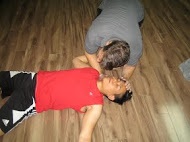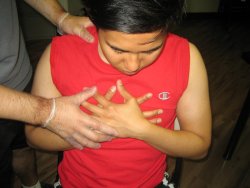
Are you aware of the first aid and CPR steps that you must follow in dealing with a heart attack? What would you do if you are near someone and they start showing the symptoms that are associated with a heart attack? Ideally, what you should do is call for professional medical help, but what do you do as you wait for this help to arrive? This article looks to highlight some of the first and CPR steps that are involved in providing an emergency plan for dealing with injuries of this nature.
[youtube url=”https://www.youtube.com/watch?v=oYlfZsxxZP8″]What are the symptoms that are associated with a heart attack?
In dealing with a heart attack, knowing the symptoms could make the difference between life and death. Granted, there are certain risk factors that predispose individuals to this form of injury, but the first aid procedure is the same regardless of the cause. Some of the factors that are create a risk for heart attacks include elevated cholesterol levels, chronic tobacco smoking as well as hypertension. Individuals with diabetes are also at risk of heart attack. With this in mind, what are some of the symptoms that one should be on the lookout for?
– Discomfort in the chest region, especially ‘stabbing’ pain that does not seem to subside.
– Pressure on the chest region as though someone placed a heavy object on the chest.
– Persistent shortness of breath even with day to day activities.
– Pain in the chest region even with minimal tasks.
It is interesting to note that while women may experience the very same symptoms, they are more likely to showcase silent symptoms of the same. Some of the ways in which this manifests when dealing with a heart attack includes: lack of breath in the absence of chest pain, abdominal pain as opposed to chest pain as well as headaches that may or may not manifest in sync with their cycle.
What do you do as you wait for professional medical help to arrive?
When dealing with a heart attack, time is of essence so it is critical to find out what one must do during the period that one awaits an ambulance. Since the culprit in many heart attack cases is lack of oxygen within the heart muscle following accumulation of fats, time is critical. Aspirin is a form of medication that has been shown to be of immense help in dealing with such cases. What’s more, following administration of the aspirin, it is important that such a victim restricts their movement.
Summary
When dealing with a heart attack in patients, the steps to follow are summarized as follows:
– Call for professional medical help by dialing 911
– Provide aspirin medication
– Monitor the patient as you await medical help.
As an additional pointer, make sure that you are well versed with the symptoms that characterize heart attack so that you are prepared ahead of any emergencies

